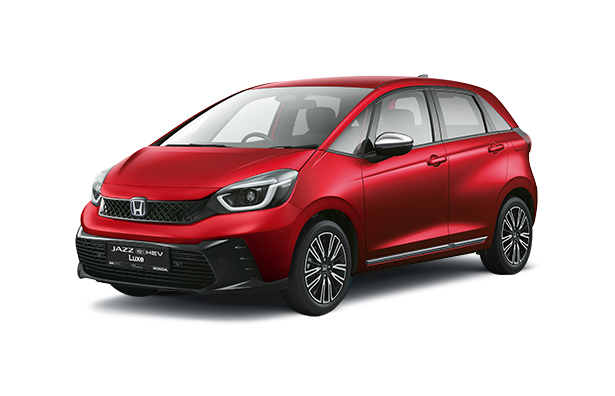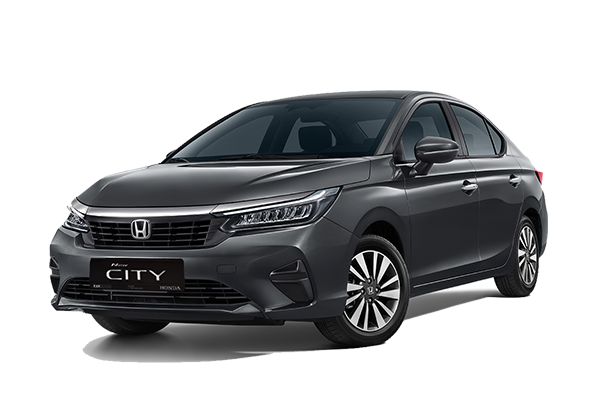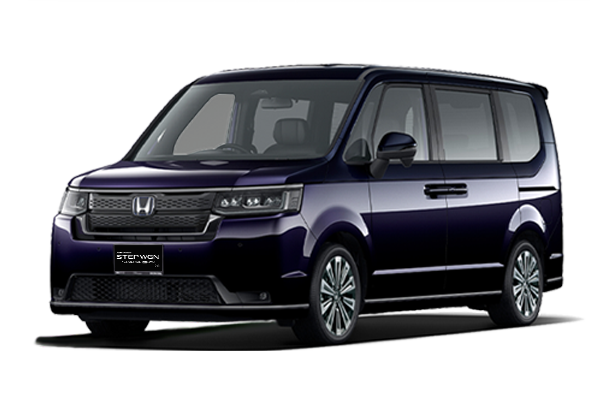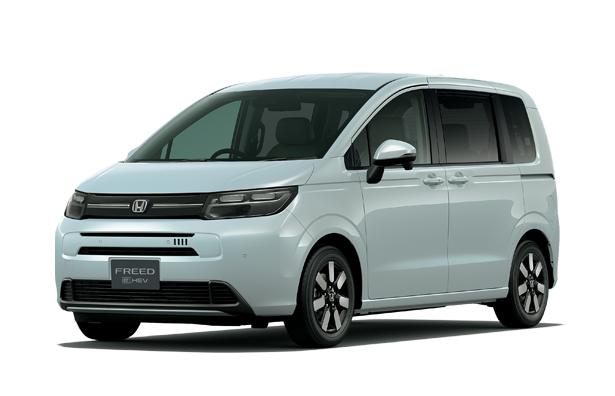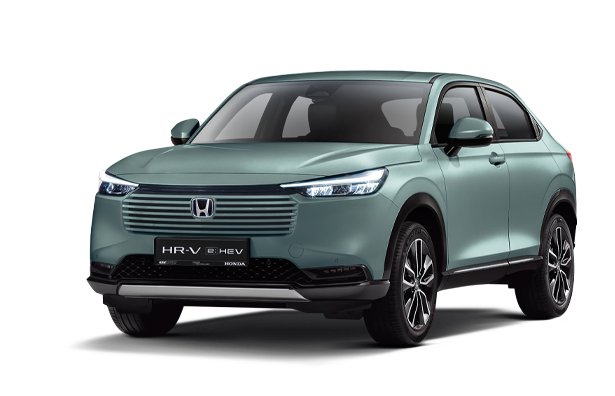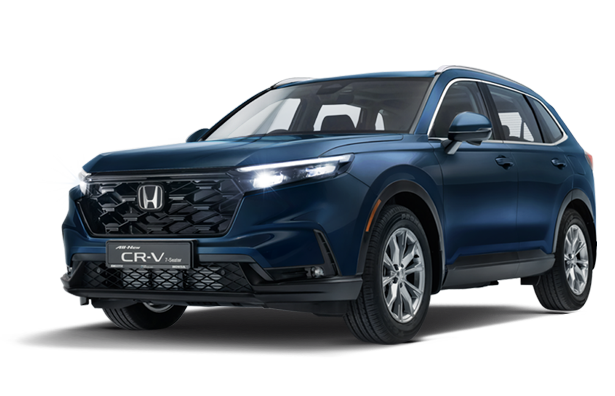2021 Honda Odyssey Review: Bon Voyage
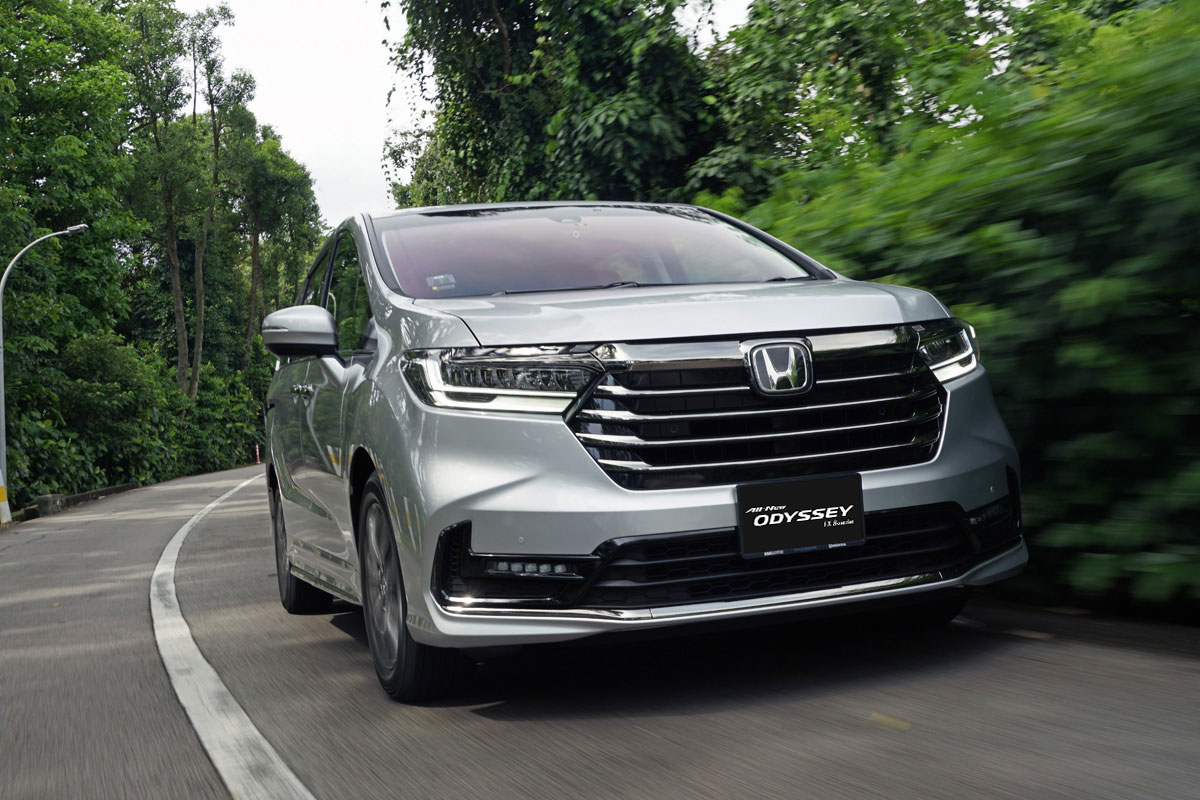
Who needs seven-seat SUVs? Honda’s capable big MPV the Odyssey shows why MPVs are the well, MVP for people-carrying in Singapore.
If you have more than five people to move around in comfort, a large multi-purpose vehicle (MPV) like the Honda Odyssey is your best choice, even in Singapore.
Yes, there are many seven-seat sport utility vehicles (SUVs) now, which have a more exciting look to shed the ‘Mom’s Taxi’ vibe, but if you’re moving more than five and value your sanity – or family harmony – then see why a car like the Odyssey is the way to go.
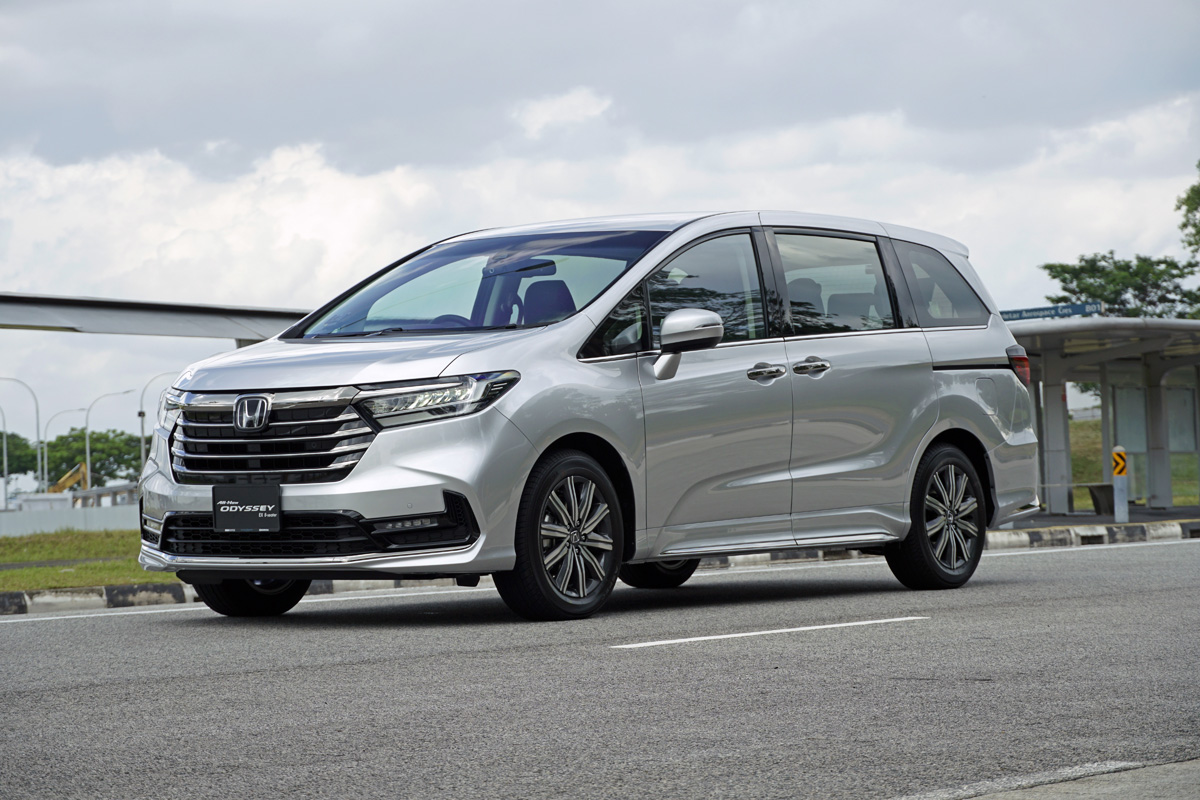
Design and Appearance
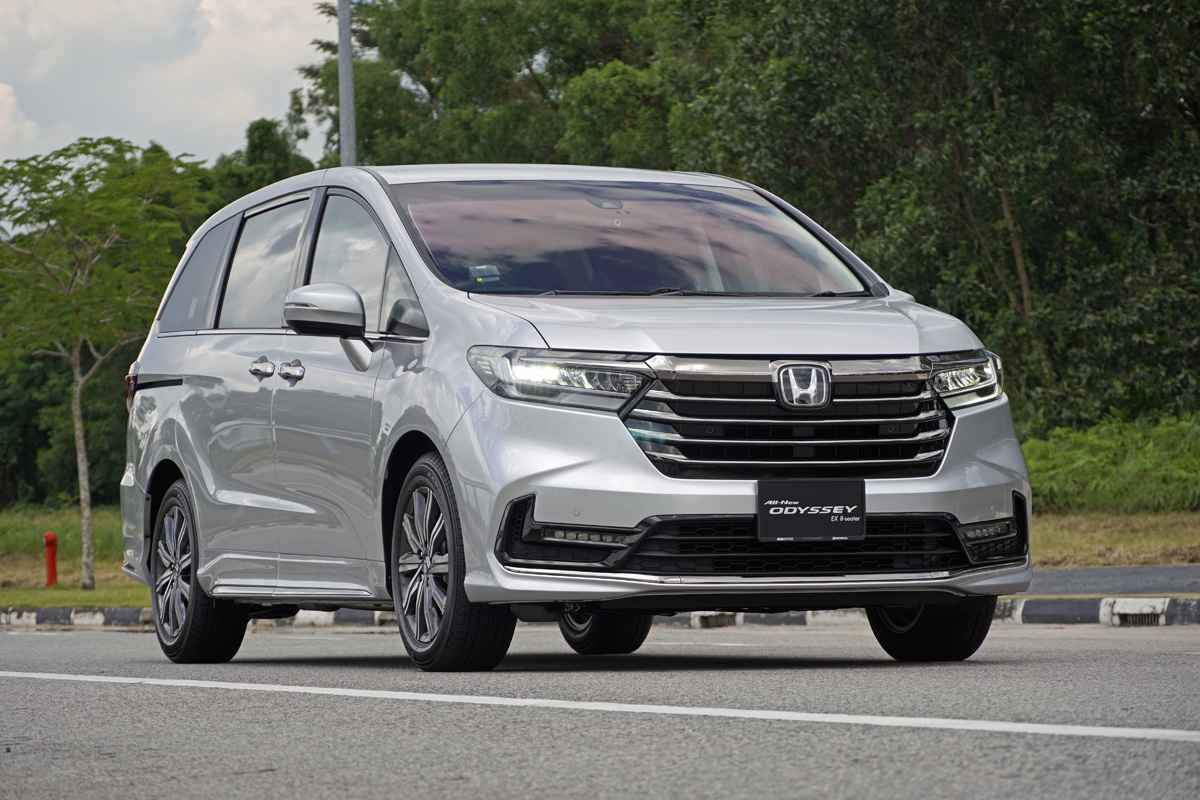
As covered in our news piece on the latest Odyssey, Honda hasn’t messed with what works, engineering-wise. The Odyssey gets a facelift for 2021, its second and a more major one, but this time around the looks have been more shook up.
Honda’s changed tack this time round and the prominent, tall grille gives the Odyssey an increased road presence that fits the times well. You’ve surely read about SUVs almost supplanting sedans as the most popular car type here, so it’s no surprise that the Odyssey receives cosmetic changes with an emphasis on verticality and implying soft-roader styling.
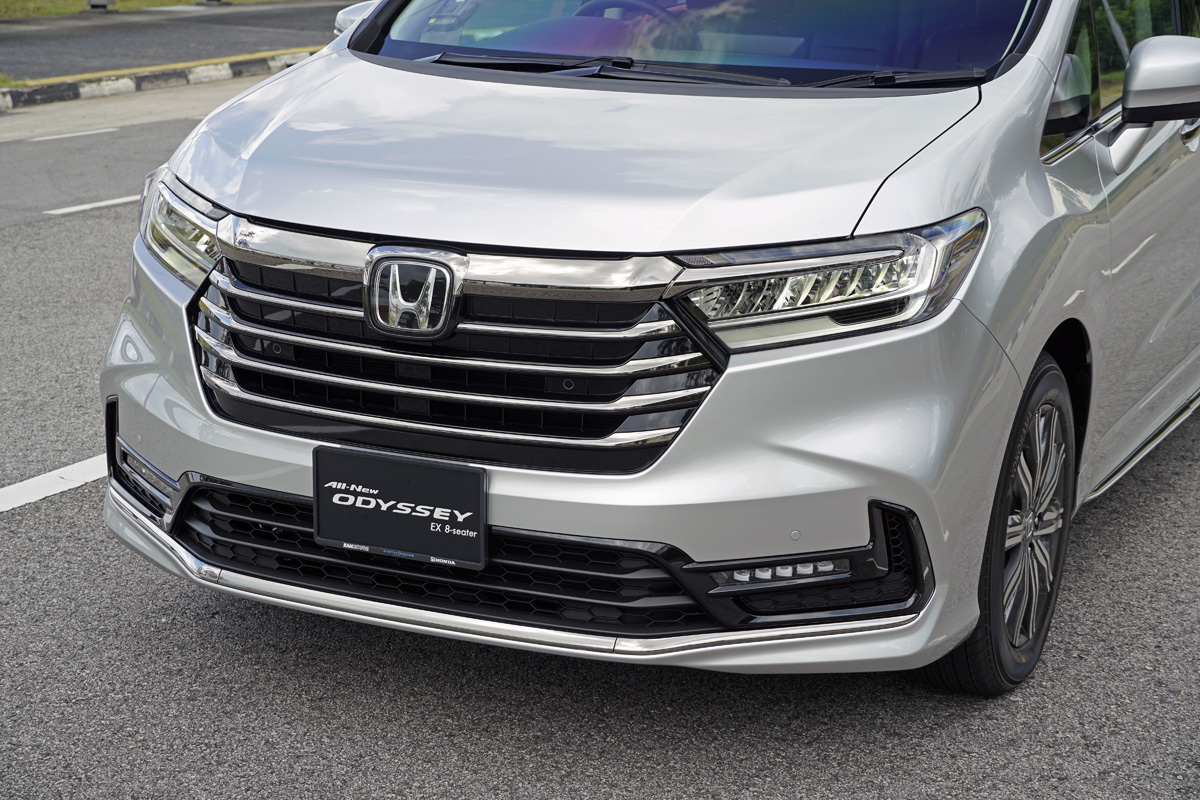
Even without putting the new and old cars side by side, there’s no missing that big, square grille.
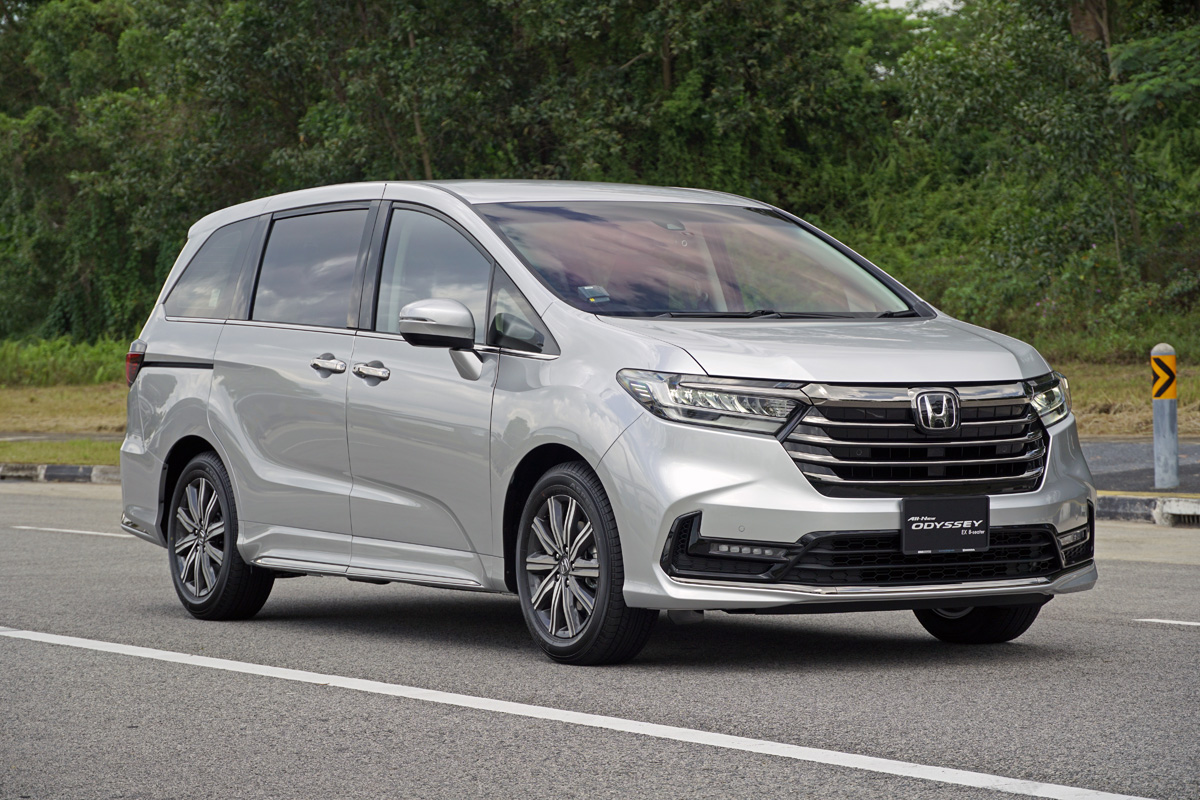
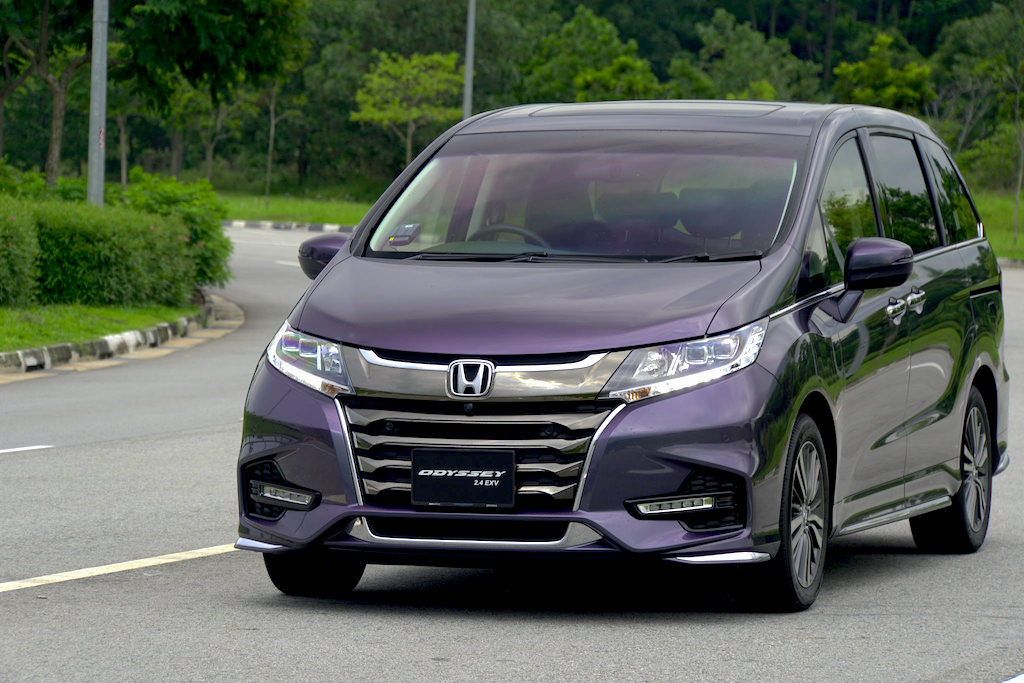
New vs Old
Whereas the previous-gen Odyssey and pre-facelift model have gone for a more shovel-nosed, streamlined look when compared to bigger, boxier MPVs like the Toyota Alphard. By moving the grille from its previous position close to the ground, and now smack between the headlights.
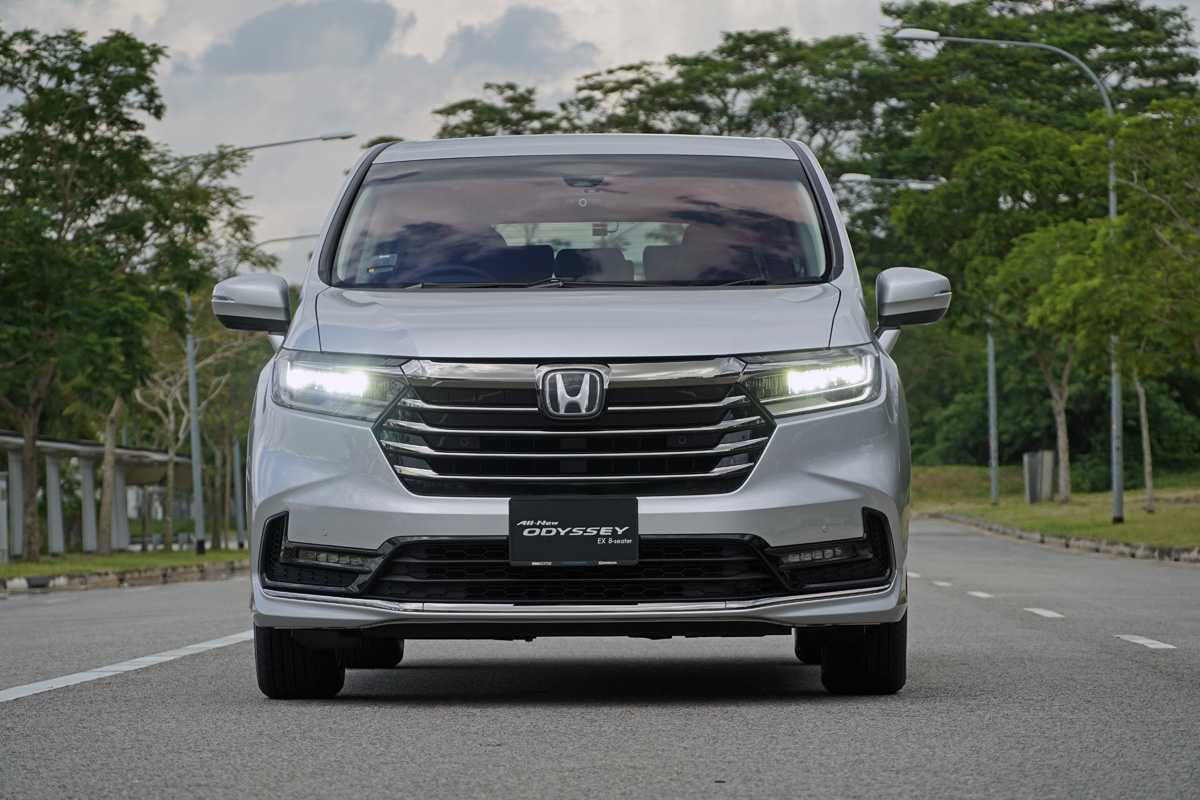
Speaking of those, both front and rear lights becoming more prominent and square. When viewed from the side, the new front end is also more blunt and vertical, and all of these cues clue us in to the idea that Honda wanted to ‘SUV-ify’ the Odyssey a little. Don’t believe us? To us, the new nose looks very similar to Honda’s US-only truck, the Ridgeline.
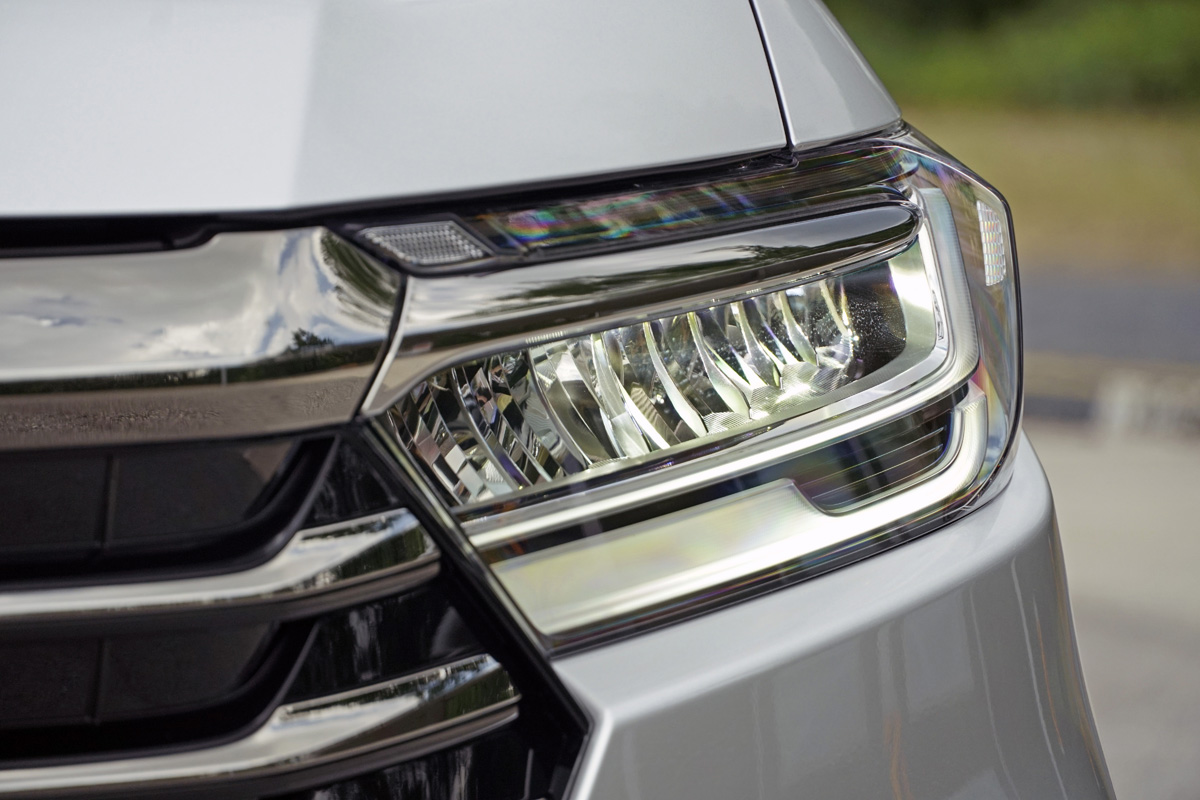
Interior and Features
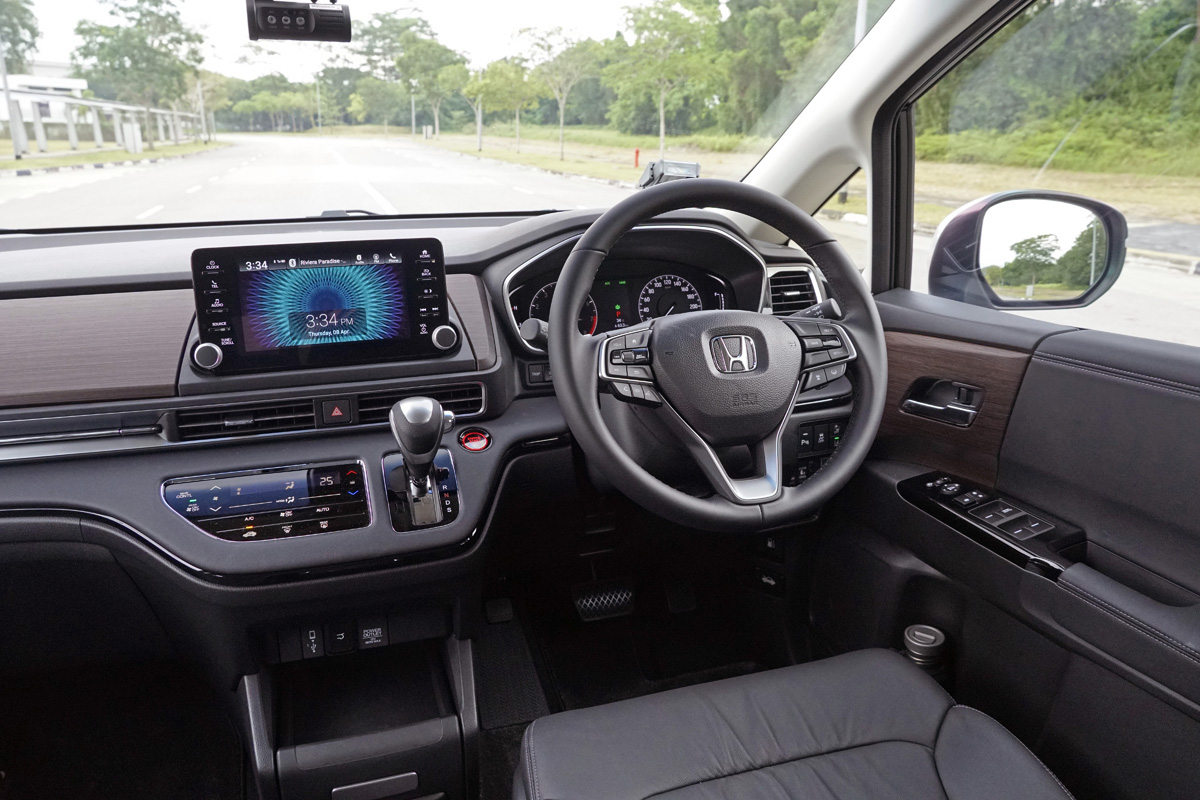
As a 2021 update, the main changes here are to digitalisation. The main infotainment system goes up and inch, to 8.0-inches, but more importantly the system is all-new. Honda’s previous Display Audio system was decent, but not outstanding in any way, and the new system is more responsive to touch, has better graphics, and a more intuitive menu system. As expected, it now plays nice with both Apple CarPlay and Android Auto.
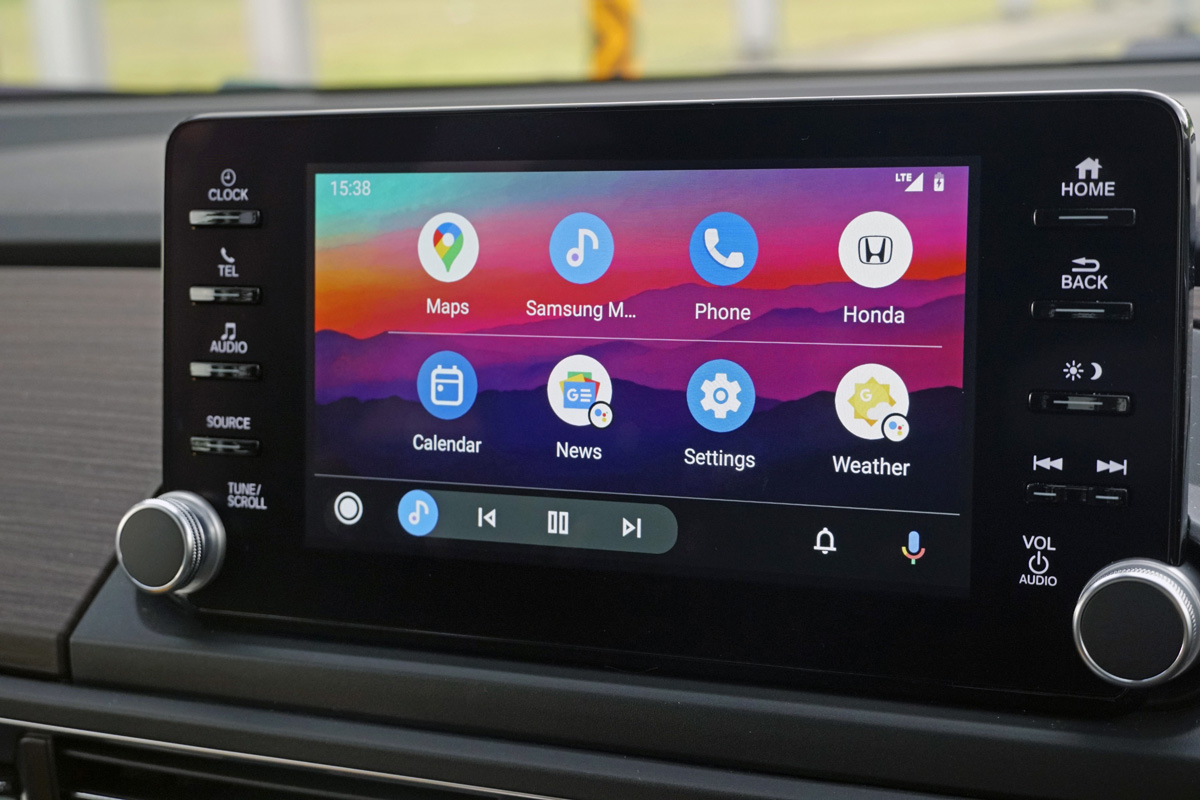
It’s matched by the 7.0-inch driver’s display. Previously the Odyssey had a more conventional instrument panel with a smaller, digital mid-segment, but now the display panel takes up the left side of the cluster, with the right side a conventional dial. It’s clearly presented and simple to use.
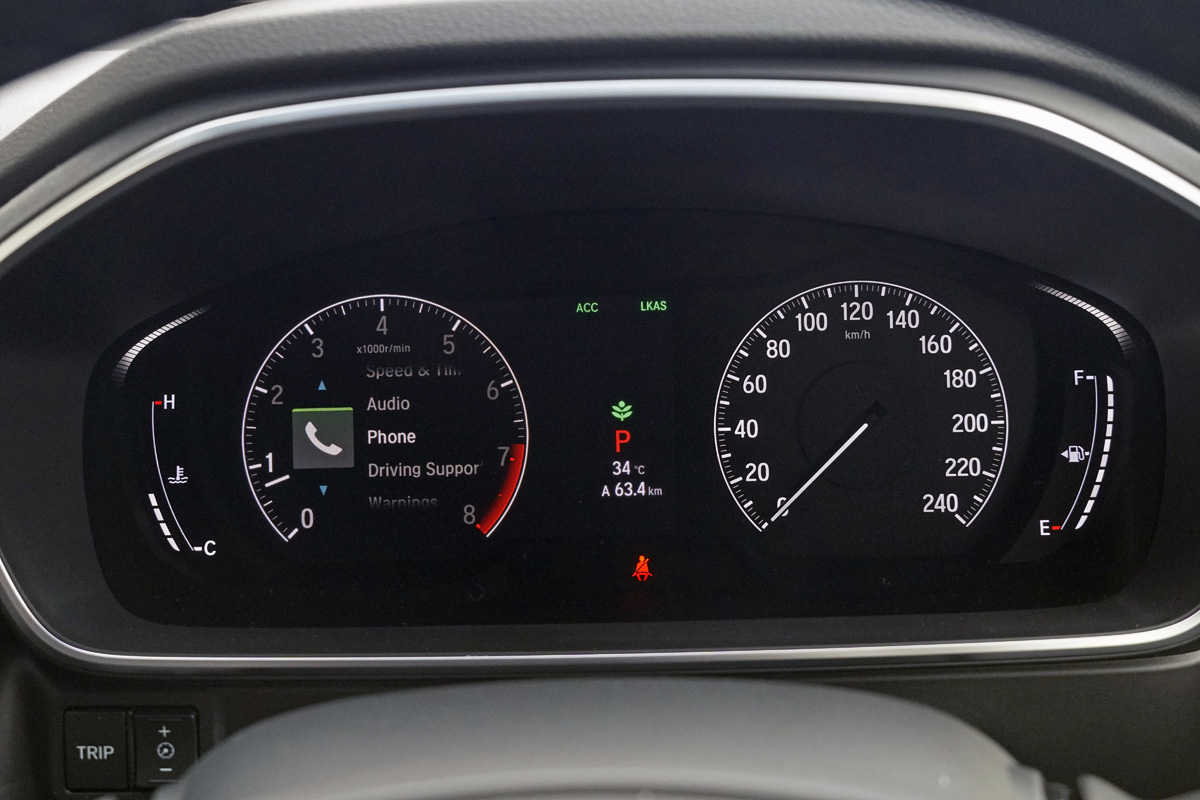
A single jog dial on the steering wheel controls allow you to scroll through everything from music playing to safety systems. Another bonus is that navigation cues from your phone (like Android Auto) appear in the digital display – something not all cars do.
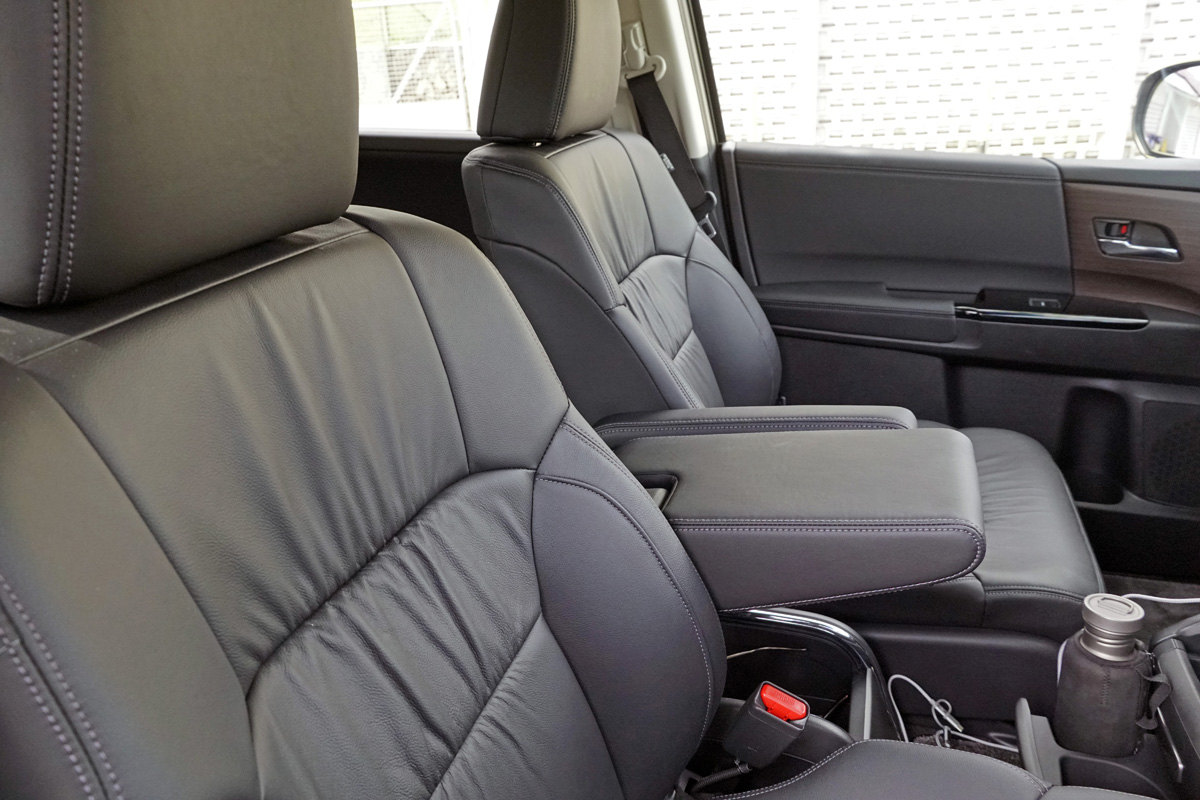
The rest of the cabin is unchanged, but what we enjoyed about it remains the same, perhaps even more enjoyable in this age of try-to-do-everything-SUVs. The seats are very comfortable, with padded armrests and a tall, commanding view of the road (again, who needs an SUV here?).
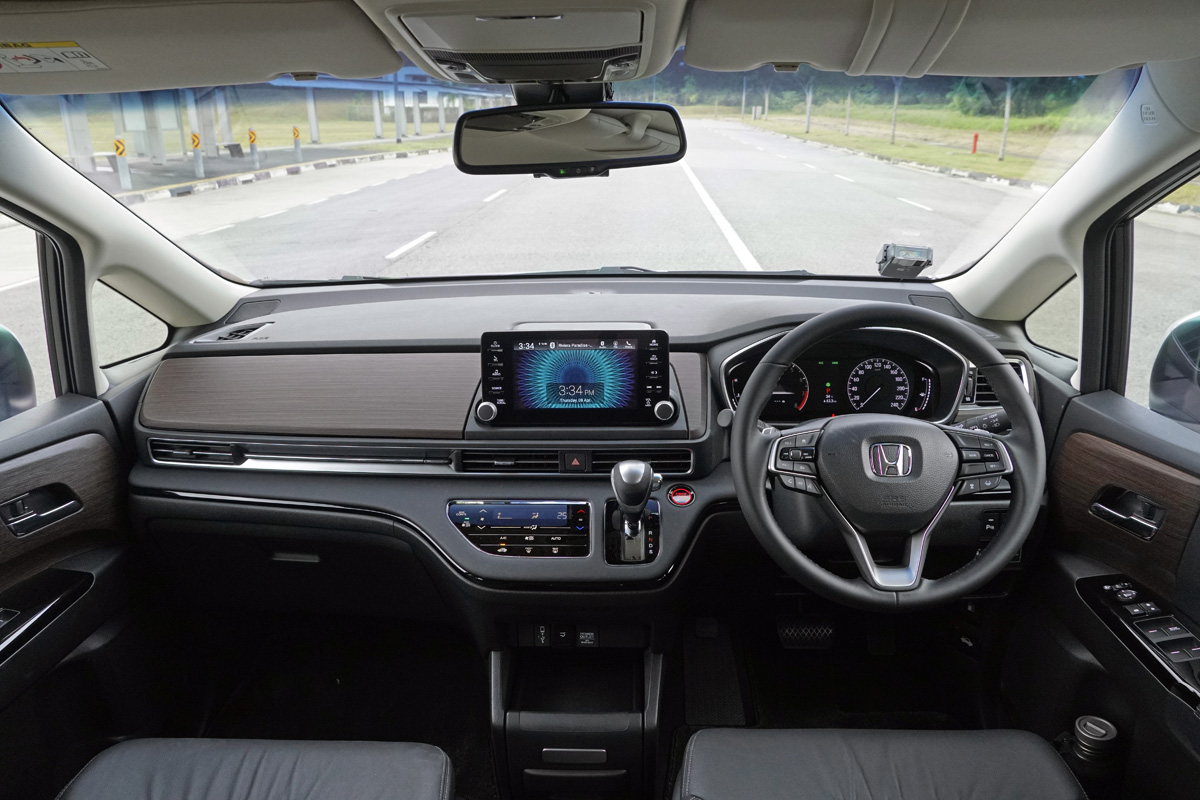
Honda Sensing, the brand’s suite of active safety systems, continues to pull duty here and is still a welcome feature. It comprises Adaptive Cruise Control with Forward Collision Warning, adding to that is the Collision Mitigation Braking System (CMBS, basically auto-brake), Lane Keeping Assist System (LKAS) and Road Departure Mitigation (RDM).
What we liked about Sensing is the major systems (adaptive cruise and lane keeping) are easily toggled via steering wheel buttons – for example, a click on the LKAS button switches it from actively correcting, to warning, or off entirely, and a glance at the driver’s display reflects the status clearly. So active safety doesn’t ironically become a hazardous distraction.
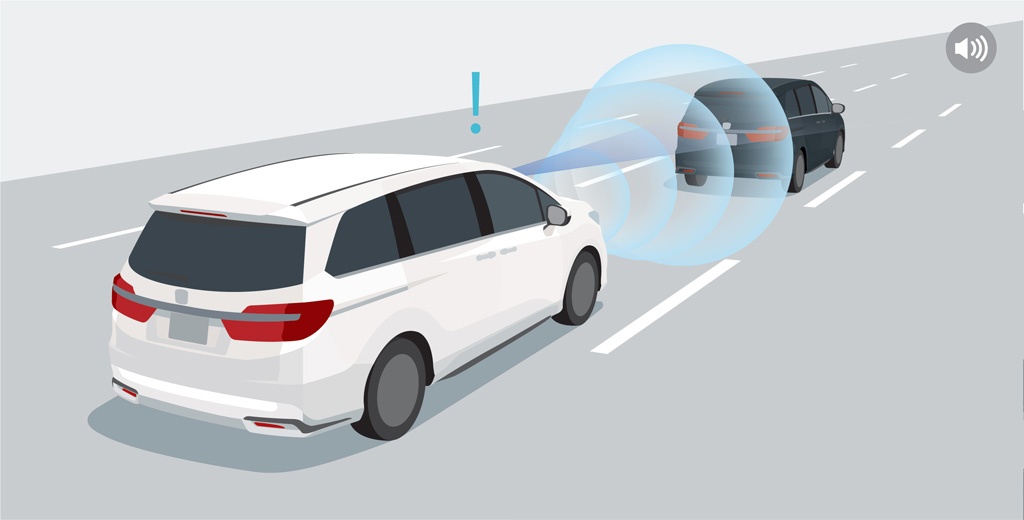
The updated Honda Sensing is also standard on all Odyssey models – the one driven here is the less expensive, eight seat EX model, with the higher-grade EXV to come shortly. Over the EX model it has two captain seats (instead of a third-row bench) and sunshades for those seats, blind spot monitoring, a handsfree tailgate, a sunroof, LED cornering lights, and independent air con zones for the first, second, and third row seats.
Space and Practicality
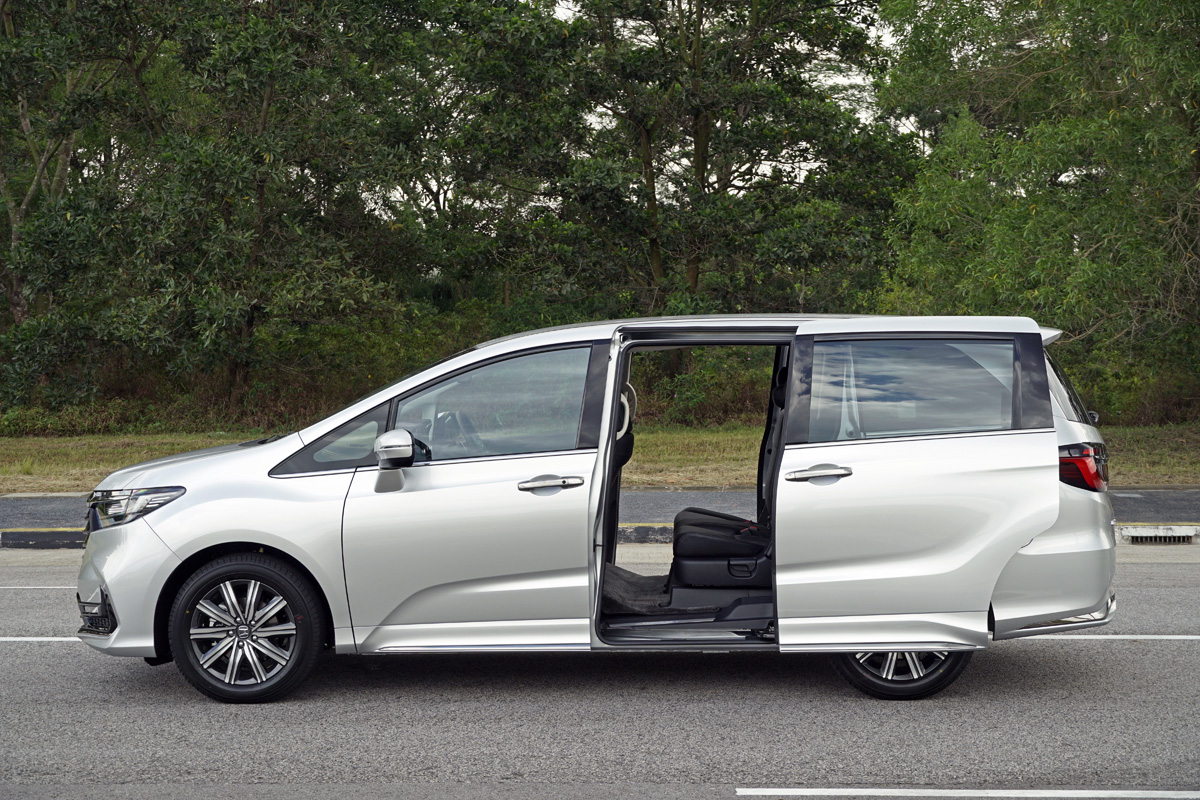
To us it’s always been a perfect size for Singapore: It’s a large MPV, so significantly bigger than something like the VW Touran and around the same size as the VW Sharan or Toyota Previa, but not quite as big as extra-big Japanese MPVs like the Nissan Elgrand and Toyota Alphard.
In real-life terms, that translates to a great MPV experience: There’s tremendous headroom so you don’t have to worry about accompanying taller folk, and packing in a netball team (seven adults, driver included) is actually possible.
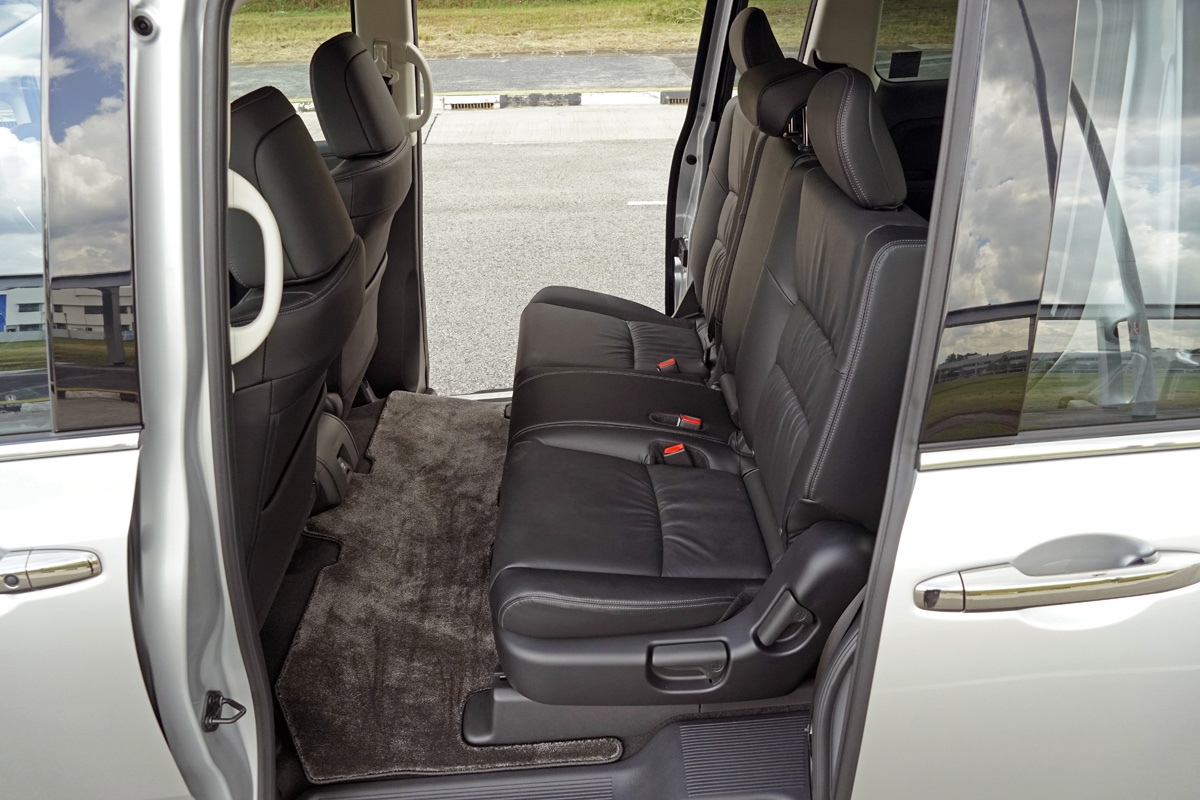
Second row fits three adults sanely
This is an eight-seater because the last row is a three-person bench, so that row’s seating is similar to that of a small or compact SUV – two people will fit in comfort, three if you rub shoulders.
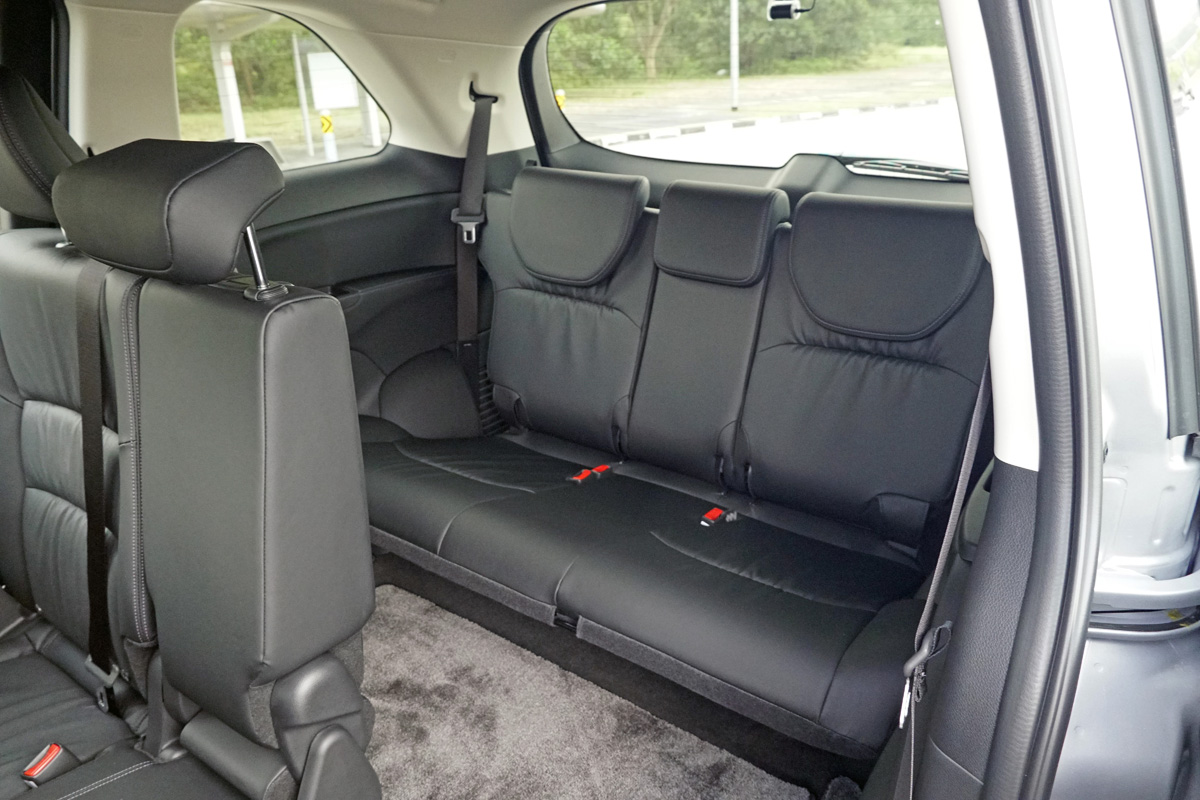
Two are good in the last row, three with squeezing
Sliding doors are a once-experienced-can’t-live-without convenience, and entry into the last row is relatively simple thanks to the sliding second row.
Big windows and airy headroom help add a sense of space to the interior, and while the EX lacks the sunroof of the EXV model, the EX still an air-con blower control in the second row, with ceiling-mounted vents for the second and third rows.
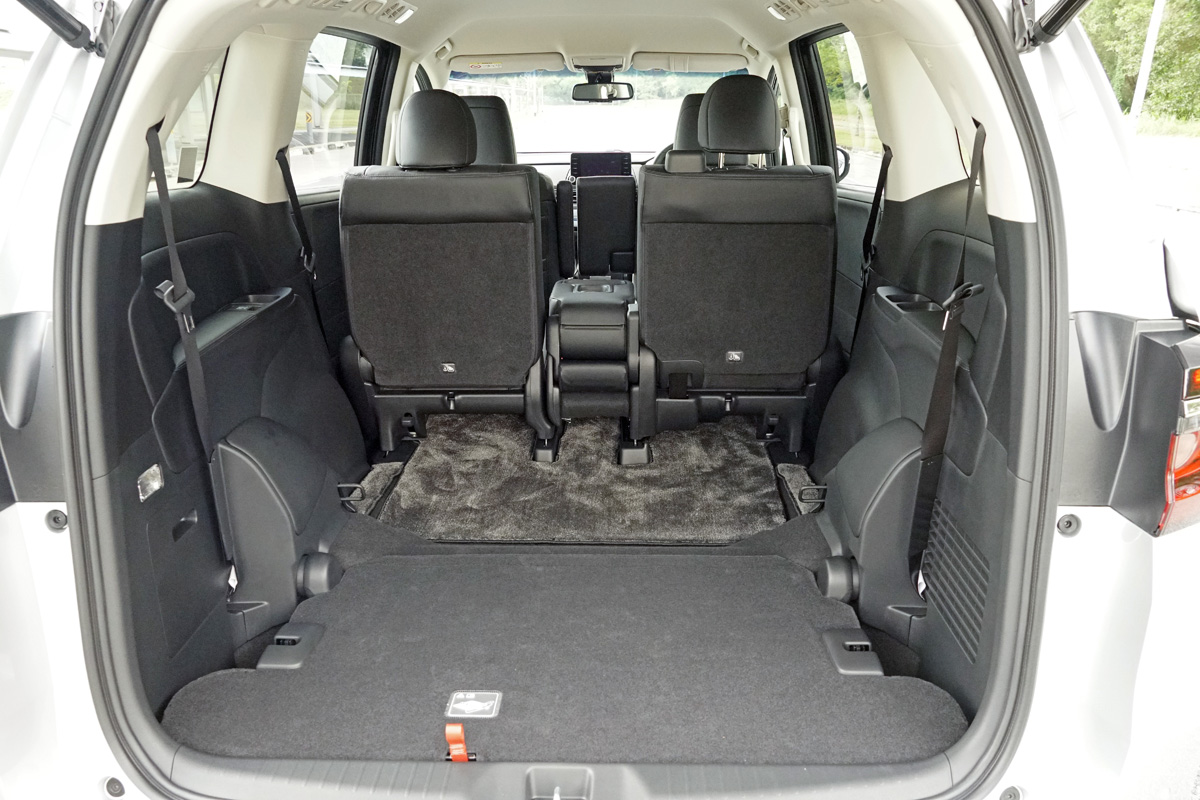
With all seats in play, there’s still 330-litres of boot space, which extends downward into the floor. When the third row is folded away it occupies that space for an entirely flat floor. As noted in our review of the pre-facelift model, Honda doesn’t have a figure for the space you get with the third row out of sight and the second row fully-forward, but it’s at least 1,800-litres by our estimation. An Odyssey would be a boon during house moving.
Driving Experience
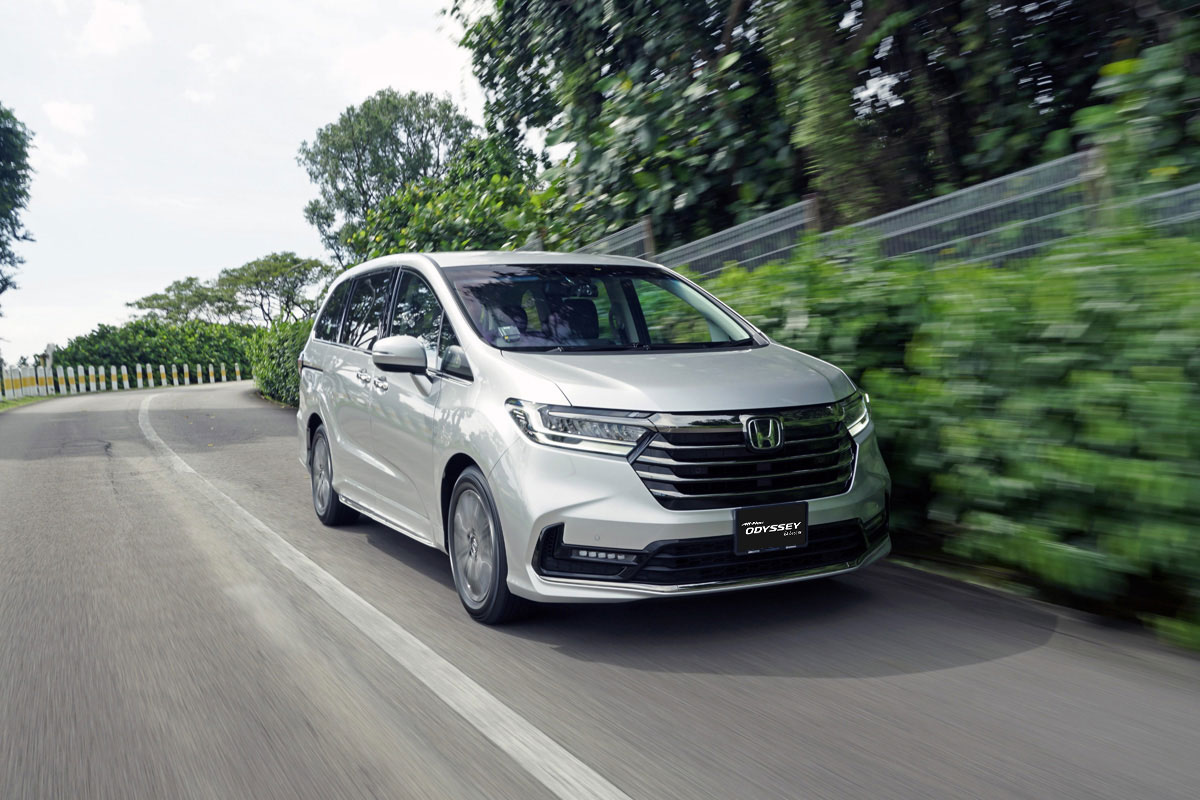
As mentioned in our news story, mechanically the Odyssey remains the same as before: 2.4-litre inline four, CVT, same platform, suspension and everything.
That is a blessing in disguise, as driving the Odyssey in SUV Mad 2021 shows just how much a car benefits from a clear, precise engineering objective: In this case it’s ‘carry seven or eight people in comfort without trying to look like a Dakar Raid car at the same time’.
That smoothness makes the Odyssey very easy to get to grips with, an impression bolstered by the car’s excellent driver visibility. As mentioned, the Odyssey’s throne-like front seats are elevated, easily on par with that of an SUV, and the large windows spell for clear sight lines.
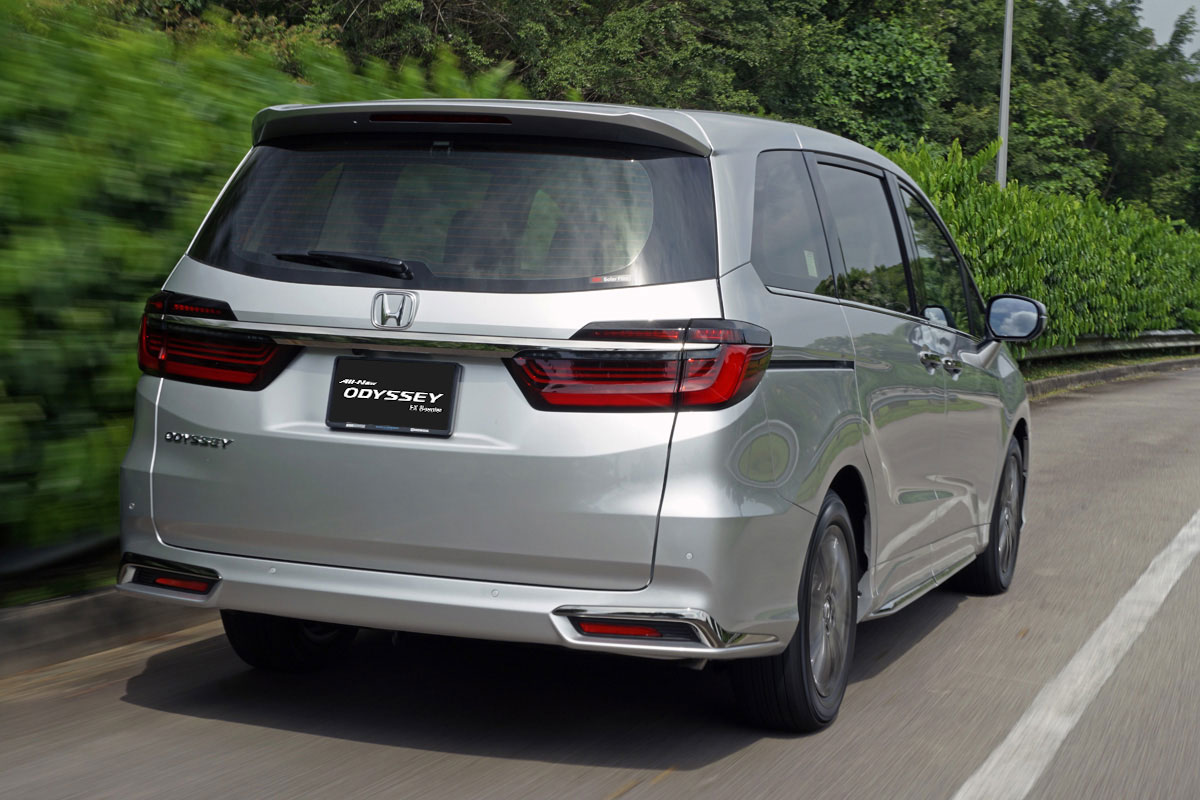
Despite the big windows and sliding doors, there isn’t much rattling or vibration in the cabin at speed, and you can see why Odysseys are popular with families who do Malaysian driveaways since it’ll sit stably at highway speeds all day without giving you noise fatigue.
You’d never attempt gymkhana in a big MPV like this one, but the Honda is a neat handler and pleasingly agile for what it is. We’ve grown to expect good dynamics from any car with that ‘H’ on the front, and the Odyssey is no different.
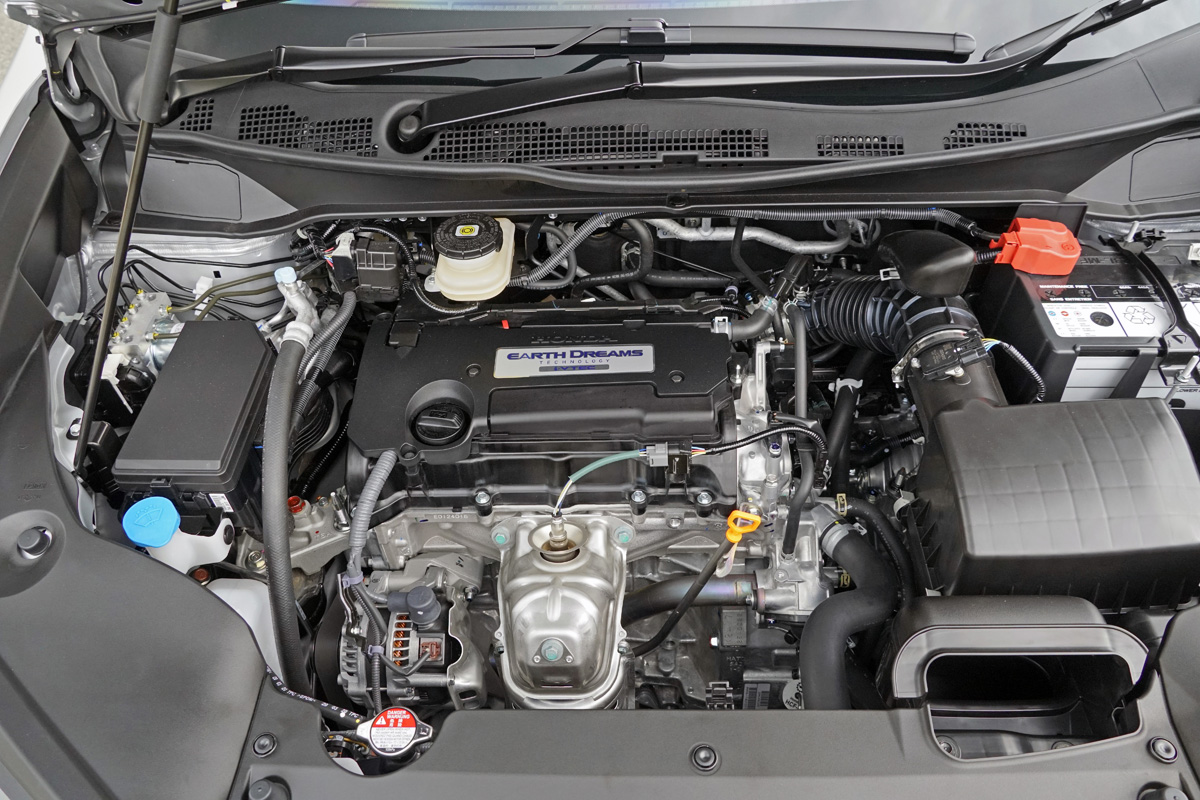
In comparison to smaller-capacity turbo engines, the 2.4-litre mill’s smoothness is unrivalled, and entirely jerk-free. It’s also surprisingly frugal : Our drive covered 200km (around 60 percent highway) and we clocked in 9.5L/100km, which is what we typically expect from a mid or big SUV.
Competition and Pricing
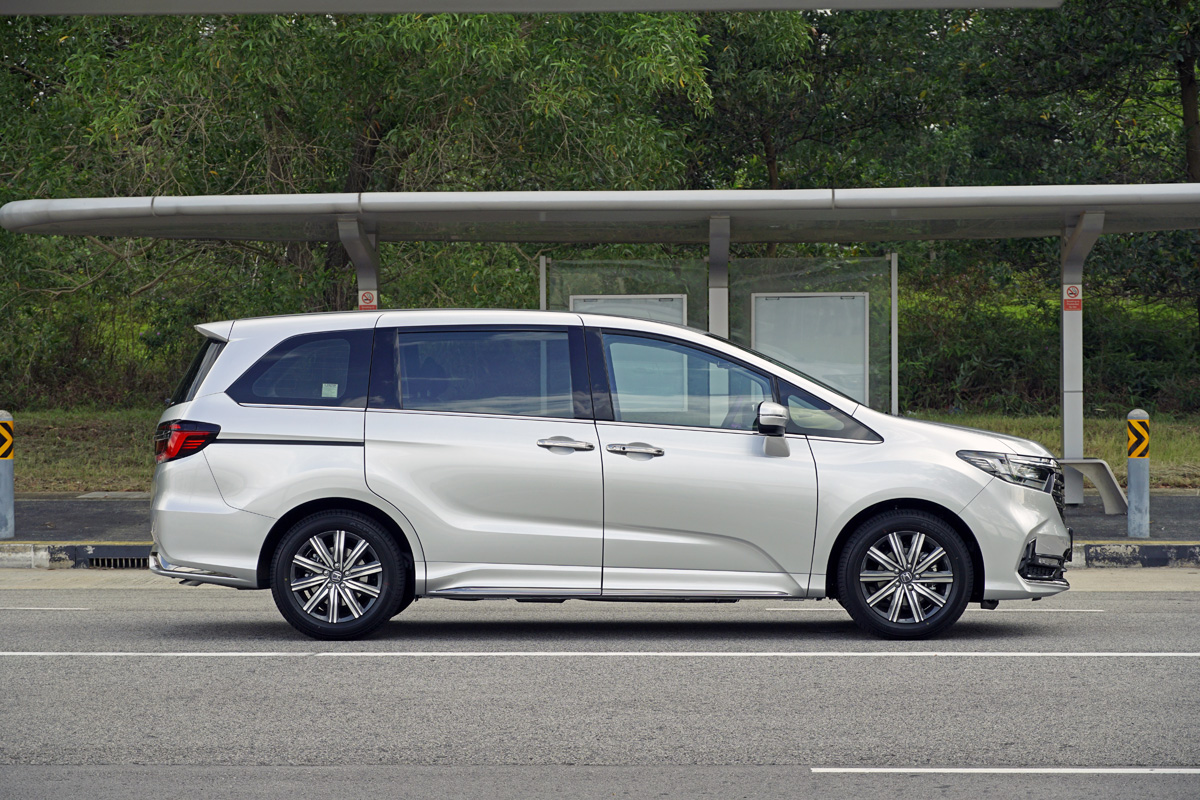
Seven-seat SUVs are everywhere these days, from the mega-affordable Mitsubishi Outlander, to the almost-lux Mazda CX-8 and CX-9, and there’s even a Mercedes in the sub-S$200k price range, the GLB. But transplant a family of seven from any of those cars, and the Odyssey’s advantage in space and comfort is clear. Point: To enjoy similar space in an SUV, you would have to graduate to a Mercedes-Benz GLE – and you’d still only have space for seven.
As mentioned the Odyssey is a large MPV that sits below super-jumbos like the Toyota Alphard, and it actually has no direct competition anymore. The only recent direct competitor is Toyota’s Previa, of a similar size and also with a 2.4-litre engine, it dropped off Borneo Motors’ price list in October 2020. As both cars have relatively large 2.4-litre engines, you’ll have to make provisions for an annual road tax of S$1,630. That, incidentally, is a sign there’s evolution needed between the bonnet, since we expect this to be the last version of the Odyssey on this platform/drivetrain.
Nissan’s hybrid Serena E-Power is more efficient, offers similar headroom but is narrower, and also has less features and refinement, but also less expensive at around S$140k with COE. Opposite to that are cars like the Alphard/Vellfire and Nissan Elgrand, but are closer to S$200k with COE. On the horizon, Kia will be launching its rather cool-looking and very large Carnival MPV for less than S$200k with COE.
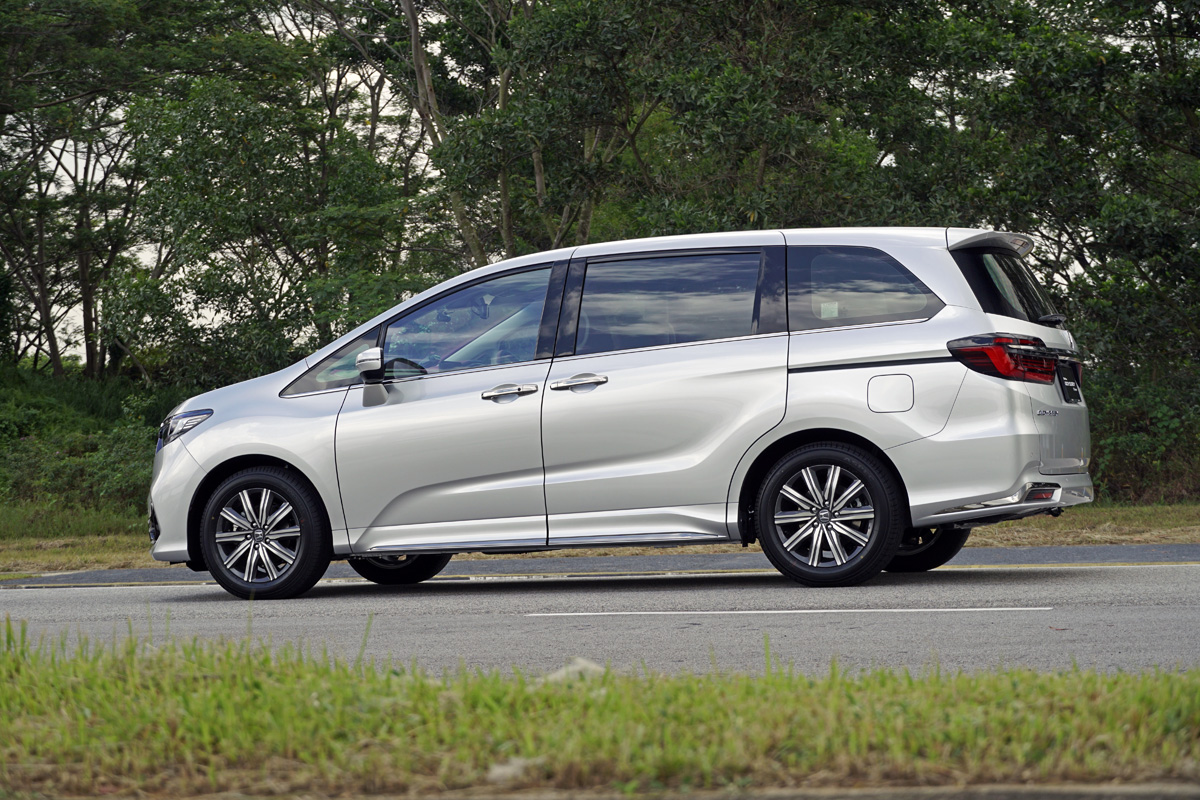
Conclusion
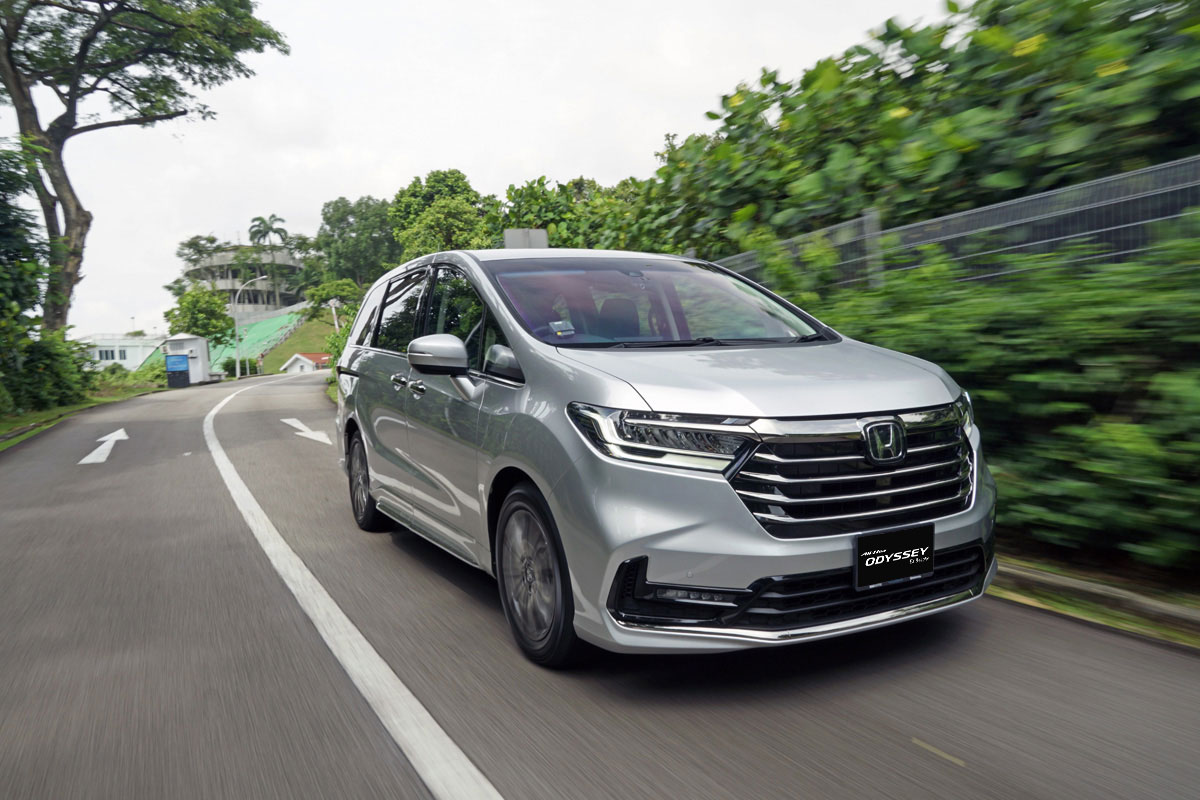
The Odyssey has always been about right-sized space: Big enough for families but not in a car too big that you have to think twice about where to park.
Other than that, its refinement and more tech at a price below that of an executive sedan means the Odyssey remains an excellent choice for one-car families.
Credits: CarBuyer. Author: Derryn Wong
Original Source: https://www.carbuyer.com.sg/2021-honda-odyssey-review-singapore-price-bon-voyage/

